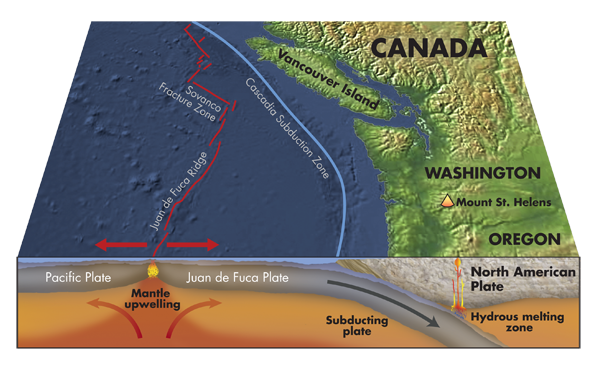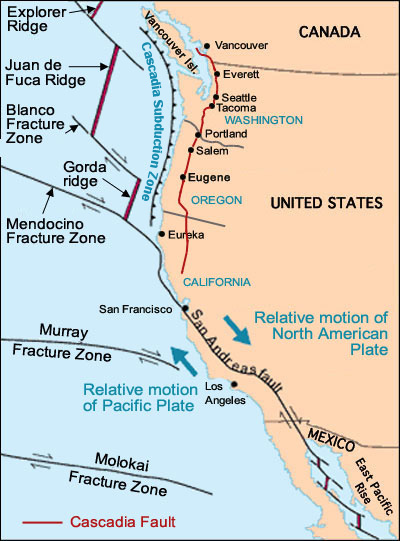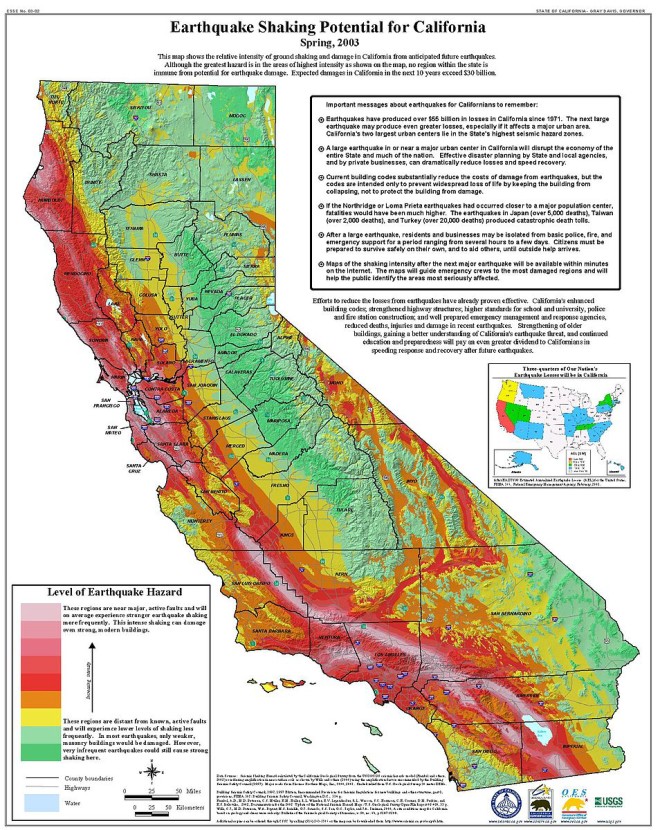I’ve lived in California most of my life. I know what an earthquake feels like. Nothing can prepare you for that shaking of the earth. All of a sudden you feel very small.
San Andreas Fault
My grama lived through the San Francisco quake. I’m not too keen on living on the Pacific Plate, which is the southern California plate where most of the big cities along the coast are located: From San Diego to San Francisco. If the quake was large enough, that’s the strip of California that would break off into the ocean — kind of like an extension to Baja California.
The San Andreas fault slides back and forth — the Pacific Plate slides against the North American Plate. See the arrows: The Pacific plate moves north, and the North American plate moves south:
When I drive through the grapevine (on the I-5) I always think about the fault since it crosses the I-5 three times near Gorman — at that MacDonalds.
Geology.com has a cool map of the San Andreas Fault where you can zoom in and get a close look of where it goes. As you can guess, I’m really fun to take a road trip with, because I look up all the geological formations along the way.
And yet there are more dangerous faults.
Cascadia Subduction Zone
The Cascadia Subduction Zone — is probably worse than the San Andreas Fault. The plates do not move back and forth as they do in the San Andreas Fault, instead the Juan de Fuca Plate subducts or dives down below the North American Plate. This happens off the coast of Washington and Oregon, as well as British Columbia. An earthquake along here can be in the 9 magnitude and cause tsunamis.
You can see how the volcanoes form, where the Pacific plate and Juan de Fuca Plate subduct under the North American Plate. There is an excellent article in The New Yorker that explains the danger of the Cascadia Subduction Zone. Everything west of Interstate 5 from Oregon to British Columbia will be “toast.”
I guess you can see the potential for greater chaos — when mother earth rebels. Things seem stable, but really, we live on molten glass.



